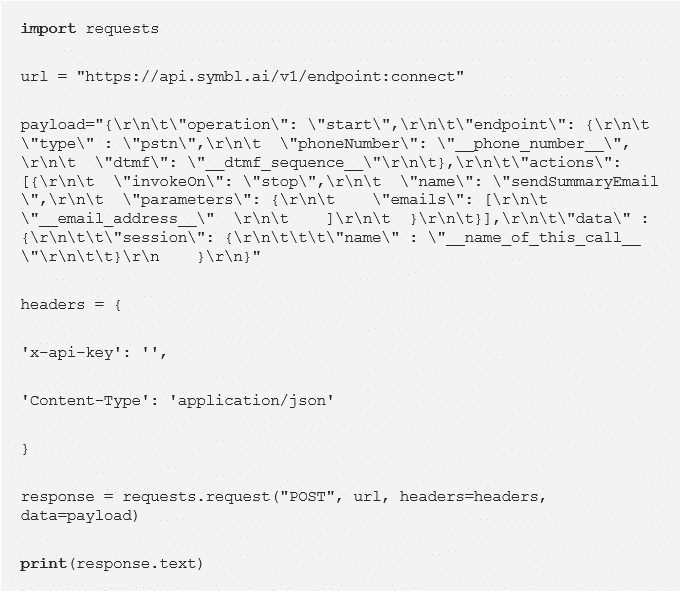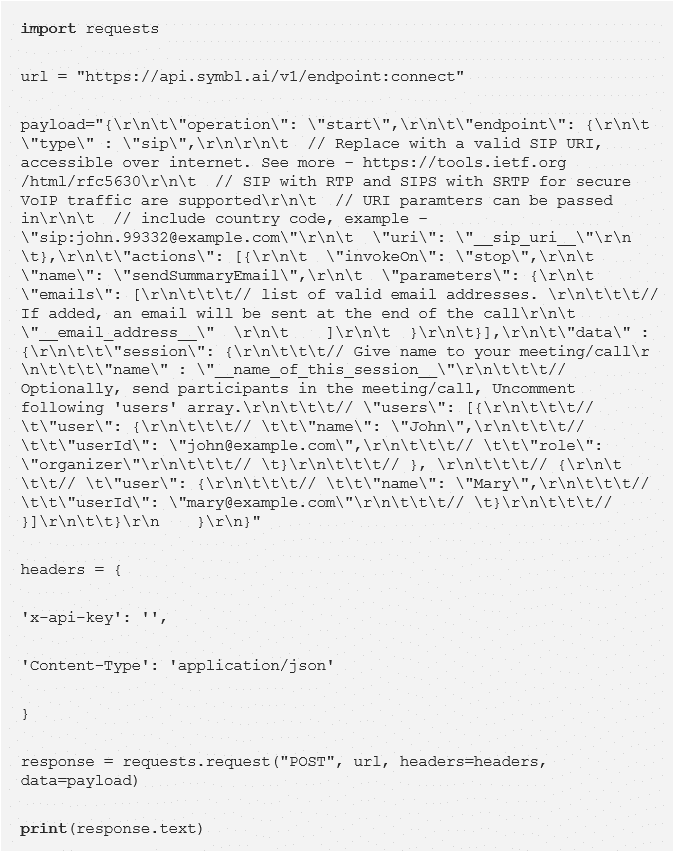Python has gained a reputation for being a highly versatile and powerful language for web and mobile app development. It’s become a favorite of companies like Spotify, Instagram, Industrial Light and Magic, Google, and Amazon because of its flexibility as a language and, among other reasons, the robust standard library.
Python has also gained a reputation as the go-to language for data science. But, beyond building applications and training AI, it’s also very adept at handling real-time APIs.
Python 3, for instance, supports a library called requests that is the de facto standard for making hypertext transfer protocol (HTTP) requests in Python. It abstracts the complexities of making requests behind a beautiful, concise, and straightforward library so you can focus more on keyword programming than creating a low-level library for solving an everyday problem. The requests library handles encoding/decoding much like Swift handles encoding/decoding.
The syntax for requests is streamlined:

With Python 3’s requests libraries, setting up a script for triggering the initialization of a public switched telephone network (PSTN) or a session initiation protocol (SIP) call from an API is just as easy as a method call on the requests library.
What is an API?
An application program interface, or API, is an interface that allows for communication between applications over the Internet. This may be an app communicating with a server or servers communicating with servers.
Companies set up an API endpoint to allow developers to deliver information to a server. The server then changes the information and, after the information is changed, the server returns a response to the request.
An API companies’ product is often no more than a product that is designed to perform a specific action or make a single change to information developers send or receive from a server.
In other words, what an API allows you to do is add functionality to a program easily, without having to create that functionality from scratch (in Symbl’s case, we make it possible to add AI to video streaming platforms, among other things).

CRUD
APIs rely on a basic architecture that allows users to CREATE, REMOVE, UPDATE, or DELETE (or CRUD) information from a server. Most API architectures revolve around this basic framework.
HTTP, the protocol designed to handle interactions to or from a server around APIs, uses what are called verbs for rapidly developing everyday interactions. These verbs are a slight variation of CRUD, but they allow you to do the same basic things:
- GET — Retrieve information from the server.
- POST — Allows you to add, or create new information.
- PUT — Makes it possible to update information that is already present.
- DEL — Lets you delete information.
With the type of request specified, the HTTP verbs require that both headers, as well as payloads, be configured before the request can be fired.
- Headers consist of their case-insensitive name followed by a colon (:), then by its value.
- A payload is the data. Below you create HTTP POST requests with Python, configuring both headers as well as payloads.
Symbl.ai’s Real-Time Telephony APIs with HTTP verbs in Python
Symbl.ai has real-time APIs that make it possible for you to enhance the human-to-human conversations that happen over the internet.
Symbl.ai’s Telephony API, for instance, enables developers to create a real-time connection with a Public Switched Telephone Network (i.e., PSTN) or a SIP (Session Initiation Protocol) call.
- PSTN, which stands for Public Switched Telephone Network, is the traditional circuit-switched telephone network. PSTN has been in general use since the late 1800s.
- SIP is a signaling protocol used for initiating, maintaining, and terminating real-time sessions that include voice, video, and messaging applications.
POST HTTP verb for the API Endpoint in Python: PSTN
You can hit Symbl’s API endpoints with a program built on Python with the requests library. The steps are:
- Import the library.
- Create a connection.
- Configure the payload.
- Configure the header.
- Create the request with the proper HTTP verb.
Here is a code snippet of how to start a PSTN call with a library for Python called requests:

POST HTTP verb for the API Endpoint in Python: SIP
SIP is almost identical. Here is a code snippet of how to start a SIP call with a library for Python called http.client:

With Symbl.ai’s APIs for real-time communications, you can create HTTP verb requests in Python with whatever library you would like.
If you are curious about HTTPS, which is the more secure form of HTTP, we recommend this series of comics from How HTTPS Works explains how HTTP becomes secure.
Symbl.ai’s Python SDK
Symbl.ai’s Python SDK vastly simplifies the process of communicating with Symbl.ai’s API endpoints. After creating a SIP or PSTN call with Python, you can continue to build new features for use-cases around your integration. A few of the use-cases may be around workflow automations with Zapier or Segment or auto-populating CRMs like Zoho’s CRM or Keap‘s CRM.
Community
Built on Contextual Conversation Intelligence (C2I) technology, Symbl’s APIs enable developers to rapidly integrate a sophisticated AI that goes beyond the simple natural language processing of voice, video, or text conversations or what are essentially merely parts of a whole called conversations.
If you enjoyed how seamlessly it was to access conversational AI with Symbl’s Async API, then check out our other APIs.
Stuck? Free feel to ask us any questions on our Slack Channel or send us an email at [email protected].
